■ We observe that you have gravitated towards Classical Turkish music, Istanbul tango, hymns and stringed instruments during these recent years of your 35-year career in music. What has these choices contributed to your music? I believe it would be correct to define my understanding of music to be crossbred. On the other hand, the music of different traditions has always intrigued me. I have a significant amount of experience in western music and cannot see myself detached from it. However, I wanted to utilize this experience in the most productive way. As a result, a unique style of music has come forth.
■ It is known that the harp was used in Anatolia during the ancient era for treatment. Is it true that those who play and listen to this instrument have a longer life span? I know that it gives a sense of tranquility to the listeners. We can say that it has a calming effect just like water… In the old ages, we know that water was used in the ancient bathhouses in the Aegean region for the purposes of treatment and so was the harp. Today, we can even come across the harp in some units in hospitals. This is also implemented in Turkey. Furthermore, there are certain features of the instrument in which whoever plays it feels more fit. Our technique is opening and closing our fingers. You pull the string and constantly open and close your fingers. This, in fact, is nothing more than a fundamental motor skill. Some harps have pegs, just like the zither, but they are less in numbers. These also help in working the muscles. Moreover, if you play a pedal harp, then you need to use your leg and feet muscles. For each of the seven notes, there is a pedal and each pedal has three different levels. Therefore, your feet become quite active. This surely helps work the lower body. The upper and lower body coordination is actually a very important action type that is weakened with age. As the harp helps work all of these motor skill coordinations, we still use it today.
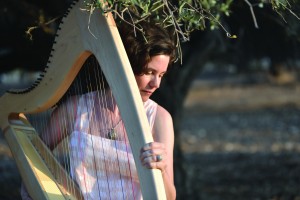
■ You have been able to resurrect the lost instrument “çeng” that was used in Anatolia. Where does this interest in this cornered harp type of instrument stem from? The relationship between history and music has always intrigued me. Çeng is a “small harp” peculiar to our geography that left the stage in history during the 17th century. The visual charm of the Ceng has always impressed me and the work Çengname of Poet Ahmed-i Dai of Bursa, who lived during the 16th century, has always nourished my imagination. Ever since the initial years of playing the harp, this special instrument that surfaced during the Middle Ages and early modern years of the Ottomans and also in Persian miniatures, and is played by sitting on the floor and has 25 chords, has always drawn my attention. In time, this curiosity of mine increased and I wanted to hear the instrument played and moreso, I wanted to personally play it. It was obvious that it was the harp of our own geography. The fact that it was often illustrated in miniatures during the Middle Ages was evidence of the fact that it was a cherished instrument. However, there has never been a model that has survived up until today.
■ Does the Ceng have a Sufi aspect to it? The Ceng is actually an angular harp. After the angular harp played in Mesopotamia disappeared, we found traces of this type of harp in the Near Eastern Islamic cultures – specifically, Turkey, Iran and Iraq. The Ceng, which owes its sound and special colour to its leather covering, has a magnificent and colourful past. This old stringed instrument that was played in the palaces during the Middle Ages, represented the political powers as well as symbolising Sufism with its body that faces towards the heavens while being played. As Ceng, which was a favourite theme amongst poets, was not able to keep up with the developments in music, it ceased to be used over time. In Evliya Chelebi’s work Seyahatname written in 1660, the existence of a single type of çeng and 10 çeng players in Istanbul are mentioned. This is the last written documentation on the instrument ceng. ■ The prices of harps have dropped significantly ever since its local production. Will this development increase the number of harp musicians in Turkey? Until recently, the price of the cheapest harp imported to Turkey was approximately 3500 euros. This is a very high price to spread the use of this instrument. A few years ago the production of local harps began in Izmir. This eventually dropped the expenses. However, the production is still quite recent. But I do believe that this positive development will increase the number of people interested in the harp. ■ Many world famous newspapers consider you to be an international talent. Is it possible to become a successful harp player with education? I would like to state that, as much as I have learnt from school in regards to music, I have learnt more outside of school. There are many factors that make a musician. Of course education is important, but it may not be sufficient on its own.
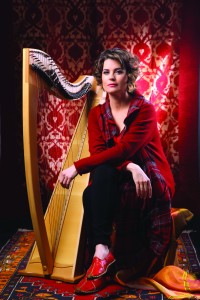
■ Can you speak a little about your recent albums titled Çengnağme and Cafe Tango? Çengnağme (The Music of Ceng) aims to reveal the different fields of use of the çeng through a modern perspective. My dear friend, Bora Uymaz, who has witnessed my works has also helped the album with his musician identity and his production. Cafe Tango is my most recent album. Tango is a dance that unites the different generations. Today, Istanbul is known to be the second capital of tango after Buenos Aires. There is a substructure and culture of tango in Turkey however, there are only a few Turkish tango that have flourished since the 1970s until today. One of the purposes of Cafe Tango
is to pursue this tradition by creating our own compositions. The album has newly composed nostaljic tango songs as well as the classical Argentinian tango songs.




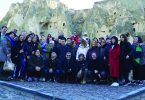
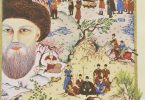
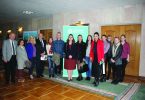


Leave a Comment